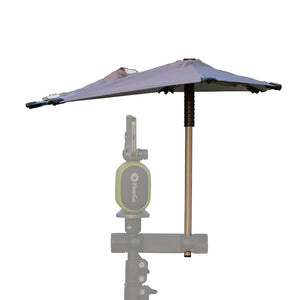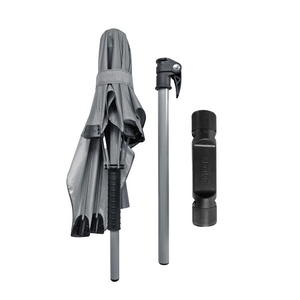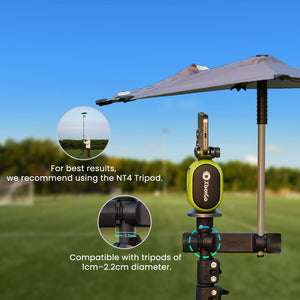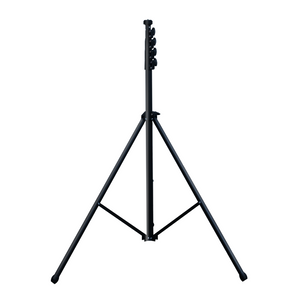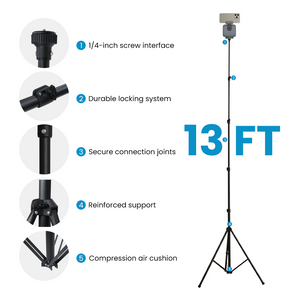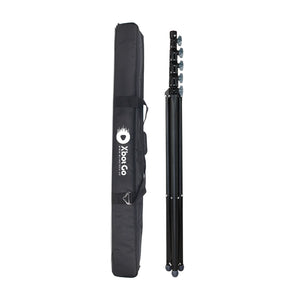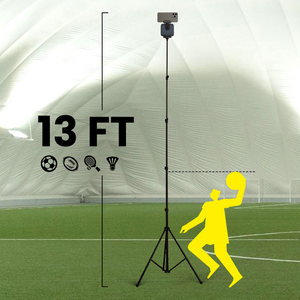XbotGo Chameleon AI Sports Camera
When Hockey Went Wild: The Highest Scoring NHL Game in History
The scoreboard at Chicago Stadium couldn't keep up. On December 11, 1985, the Edmonton Oilers and Chicago Blackhawks combined for 21 goals in a 12-9 Edmonton victory—a record that still stands today. This wasn't just hockey; it was an offensive explosion that forever changed how we think about NHL scoring.
The Night Hockey Became Basketball (December 11, 1985)
The atmosphere inside Chicago Stadium that Wednesday night was electric, but no one could have predicted what was about to unfold. The Oilers, led by their legendary roster of Wayne Gretzky, Mark Messier, Jari Kurri, and Glenn Anderson, came out firing on all cylinders.
Edmonton jumped to a shocking 6-0 lead before the Blackhawks even knew what hit them. The goals came in rapid succession—bang, bang, bang—like a heavyweight boxer landing combination punches. Chicago goaltender Murray Bannerman was pulled after allowing four goals on just nine shots, but his replacement, Bob Sauve, didn't fare much better.
The Blackhawks, however, weren't about to roll over in front of their home crowd. Led by Denis Savard and Steve Larmer, Chicago mounted one of the most furious comebacks in NHL history. They clawed their way back into the game, trading goals with Edmonton in a second period that saw 12 combined tallies—still an NHL record for most goals in a single period by both teams.
By the time the dust settled, Jari Kurri and Glenn Anderson had each notched hat tricks for Edmonton. The stat sheet looked more like a basketball box score: 90 combined shots on goal, with Edmonton outshooting Chicago 47-43. The Oilers' power play went 3-for-4, while Chicago converted 2-of-5 opportunities.
But here's the most remarkable statistic of all: Wayne Gretzky, the greatest goal scorer in hockey history, didn't score a single goal. Instead, The Great One dished out seven assists, tying Billy Taylor's single-game NHL record set in 1947. It was quintessential Gretzky—making history by making everyone around him better.
The Other 21-Goal Spectacle (January 10, 1920)
While the 1985 Oilers-Blackhawks shootout gets most of the attention, it actually shares the record with a game from hockey's earliest days. On January 10, 1920, the Montreal Canadiens demolished the Toronto St. Patrick's 14-7, combining for the same 21-goal total.
This game came during an era when hockey was a vastly different sport. Goaltenders stood upright like scarecrows, equipment was primitive by today's standards, and forward passing wasn't even allowed in all zones. The Canadiens' Newsy Lalonde led the assault with six goals—a performance that would be unthinkable in modern hockey.
The 1920 game represented hockey at its most raw and chaotic. Players wore minimal padding, goalies had no masks, and the ice surface at Montreal's Mount Royal Arena was 10 feet shorter than today's standard rinks. Despite these differences, both the 1920 and 1985 games achieved the same magical number: 21 goals, a total that has proven impossible to match in the century-plus since the NHL began.
What Creates a Goal-Scoring Explosion?
Understanding how these offensive explosions occur requires examining multiple factors that aligned perfectly on those historic nights.
Goaltending Vulnerabilities: In the 1985 game, both starting goalies were pulled early. Chicago's Murray Bannerman and Edmonton's Andy Moog were having off nights, and their replacements couldn't stem the tide. When goaltenders struggle to track the puck or lose confidence, scoring chances multiply exponentially.
Momentum Swings: High-scoring games often feature dramatic momentum shifts. Once teams start trading goals, defensive structure can break down completely. Players abandon conservative positioning in favor of all-out attacks, creating the perfect storm for offense.
Special Teams Success: Both historic 21-goal games featured prolific power-play scoring. When penalties pile up and special teams click, goal totals can skyrocket. The extra space afforded by power plays allows skilled players to showcase their creativity.
Era-Specific Factors: The 1980s represented the perfect confluence of factors for high scoring: smaller goalie equipment, less defensive coaching sophistication, and rules that favored offense. Meanwhile, the 1920 game occurred when the sport was still evolving its basic strategies and systems.
The 1980s: Hockey's Golden Age of Offense
To truly understand the 1985 record-setter, you need to appreciate the unique environment of 1980s hockey. This was an era when 50-goal scorers were commonplace, and Wayne Gretzky routinely exceeded 200 points per season—feats that seem impossible today.
Several factors contributed to this offensive explosion. Goalie pads were significantly smaller, leaving more net to shoot at. The butterfly style that Patrick Roy would popularize was still in its infancy, meaning most goalies played a stand-up style that left the lower portions of the net exposed.
Coaching philosophy also differed dramatically. Teams prioritized offensive firepower over defensive structure. The neutral zone trap that would dominate the 1990s hadn't yet been widely adopted. Instead, teams engaged in end-to-end rushes that created numerous odd-man opportunities.
The talent disparity between teams was more pronounced as well. Powerhouse teams like the Edmonton Oilers could roll four lines of skilled forwards against opponents who might have one or two scoring lines at best. This imbalance led to lopsided scores that would be unthinkable in today's salary cap era.
Gretzky's 7-Assist Masterpiece
While goals grab headlines, Wayne Gretzky's seven-assist performance in the highest-scoring game deserves special recognition. It demonstrated why he's not just the greatest goal scorer but the greatest player in hockey history.
Gretzky's vision that night was supernatural. He seemed to know where every player would be before they got there, threading passes through impossibly tight spaces. His first assist came on a power-play goal by Jari Kurri, where Gretzky drew three defenders before sliding a no-look pass to his linemate.
The most remarkable aspect? Gretzky had numerous Grade-A scoring chances himself but consistently chose to set up teammates. This selflessness defined his career—he retired with more assists (1,963) than any other player has total points.
His seven assists that night tied Billy Taylor's 38-year-old record and showcased the playmaking genius that separated Gretzky from every other player. While goals are glamorous, Gretzky proved that creating them could be even more impressive.
Other Epic High-Scoring Games
While the 21-goal games stand alone at the summit, NHL history features numerous other offensive spectacles worth remembering:
Edmonton Oilers 12, Minnesota North Stars 8 (January 4, 1984): Wayne Gretzky's eight-point night (4 goals, 4 assists) powered another 20-goal outburst. This game exemplified the Oilers' dynasty years when they seemingly scored at will.
Toronto Maple Leafs 11, Edmonton Oilers 9 (January 8, 1986): Just over a year after the Chicago game, Edmonton found themselves on the wrong end of another 20-goal affair. The Maple Leafs, led by Miroslav Frycer's four-goal performance, proved that even the mighty Oilers could be outgunned.
Vancouver Canucks 10, Minnesota North Stars 9 (October 7, 1983): This 19-goal thriller featured wild momentum swings and a combined 15 different goal scorers. It perfectly captured the wide-open style that defined early 1980s hockey.
More recently, the NHL has seen occasional offensive explosions, though nothing approaching those 1980s totals. The Tampa Bay Lightning's 9-3 victory over the Detroit Red Wings in 2019 represented one of the highest-scoring games of the modern era, showing that explosive offense isn't entirely extinct.
The Evolution From Then to Now
The contrast between hockey's high-scoring past and today's game is stark. Modern NHL games average around 6 total goals, compared to nearly 8 during the mid-1980s. Several evolutionary factors explain this shift.
Goaltending has undergone a complete revolution. Today's netminders are athletic marvels who use the butterfly technique, positional play, and massive equipment to cover more net. The stand-up style that allowed many goals in 1985 is extinct at the professional level.
Defensive systems have become incredibly sophisticated. Teams employ complex neutral zone schemes, detailed pre-scouting, and video analysis to shut down opposing offenses. The days of firewagon hockey with minimal defensive structure are long gone.
Rule changes have had mixed effects. While the elimination of the two-line pass rule and stricter penalty enforcement post-2005 lockout increased scoring somewhat, it hasn't returned to 1980s levels. The skill level across the league has also evened out, making 12-9 games virtually impossible.
Why These Games Matter
The highest-scoring games in NHL history represent more than just statistical curiosities—they're time capsules that capture hockey at its most chaotic and entertaining. They remind us that beneath all the systems and structure, hockey is about creativity, skill, and sometimes pure offensive mayhem.
These games also serve as measuring sticks for different eras. When fans debate whether today's players could compete with 1980s stars, games like the 21-goal spectacles provide context. They show how dramatically the sport has evolved while highlighting the timeless nature of elite talent.
For younger fans who've only known the lower-scoring modern game, these historic shootouts offer a glimpse into an alternative hockey universe—one where defense was optional and every rush up ice could end in a goal. They prove that hockey has many faces, from tactical chess matches to all-out scoring free-for-alls.
Looking Back, Moving Forward
The December 11, 1985, game between Edmonton and Chicago will likely never be matched. Modern hockey has evolved too far defensively for such offensive chaos. But that's what makes it special—a monument to what's possible when all the stars align and the scoreboard can barely keep up.
These games remind us why we love hockey: for those impossible moments when anything can happen. Whether you witnessed them live or discovered them through highlights, the highest-scoring games in NHL history deserve celebration as testaments to the sport's most explosive potential.
What's your favorite high-scoring game memory? Share your connection to hockey's most offensive moments—because while the game evolves, these incredible nights live on in our collective hockey consciousness.
XbotGo Chameleon AI Sports Camera
Capture every moment with AI-powered tracking. Perfect for coaches, parents, and athletes who want seamless footage without manual filming.







 Soccer
Soccer Basketball
Basketball Ice Hockey
Ice Hockey Rugby
Rugby










